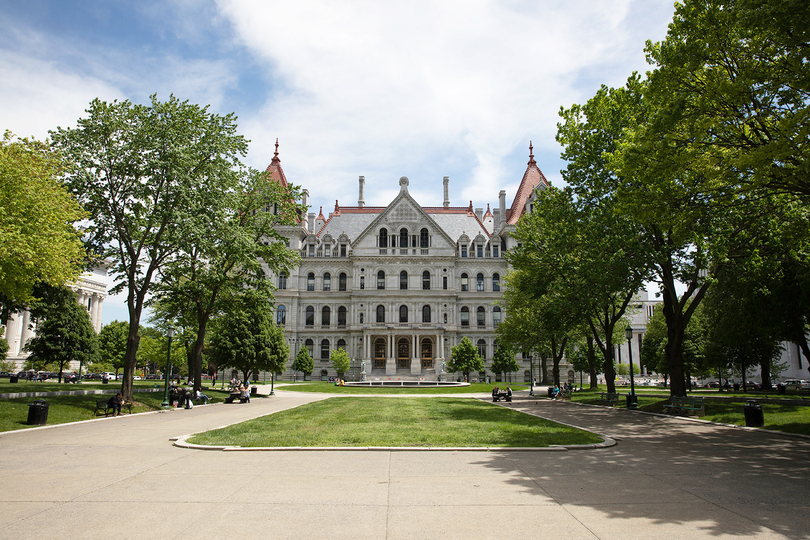Gov. Hochul announces New York will phase out gas-only vehicle sales by 2035

All new vehicles sold in New York state by the year 2035 must be zero-emissions, like electric or plug-in hybrid vehicles. Daily Orange File Photo
To support student journalism and the content you love, become a member of The Daily Orange today.
New York state plans to phase out sales of gas-only vehicles and transition entirely to zero-emission vehicles by 2035, Gov. Kathy Hochul announced in a news conference Thursday.
The plan, which is adopted from a similar requirement in California, requires incremental changes in the percentage of zero-emissions vehicles sold. In “model year” 2026, the state will require 35% of all sales to be zero-emissions with 68% being zero-emission by 2030. By 2035, the state will only allow the sale of zero-emission vehicles.
New York’s move is necessary to reach the state’s environmental goals, said Dr. Jay Golden, a professor in Syracuse University’s Maxwell School of Citizenship and Public Affairs who specializes in net-zero carbon transition. But it will also impact those working in a phased-out industry.
“(The transition) will have a significant impact on reducing greenhouse gas emissions in the United States and helping us towards a net zero economy,” Golden said.
The act will phase out the use of internal combustion engines, which will also benefit air quality and human health, said Golden, who is also the founder and director of the Dynamic Sustainability Lab.
Golden said the new policy has large implications for industries, the workforce and the economy. In historical terms, the transition will be “rapid,” he said.
“You’re gonna have legacy industries that are going to be impacted, not overnight, but over the time of this transition,” Golden said. “You’ll have (questions) such as what happens to corner gas stations, what happens to automotive mechanics, what happens to, really, dealerships as well?”

Stephanie Zaso | Design Editor
Highway systems and community infrastructures will also need to change as the transition plays out in order to accommodate a new, mostly-electric vehicle population, Golden said. With more electric vehicles, roads and parking lots will require more charging stations.
The energy and transportation workforce will also need training to adjust, he added.
New York and California are serving as “catalysts” for moving the transportation industry to be majority reliant on renewable energy sources, Golden said.
California’s new policy will lead to 9.5 million fewer “conventional” vehicles sold by 2035 and reduce 25% of “smog-causing pollution” from light-duty vehicles by 2037 within the state, according to the California Air Resources Board.
“New York is a national climate leader and an economic powerhouse, and we’re using our strength to help spur innovation and implementation of zero-emission vehicles on a grand scale,” Hochul said in a statement released Thursday.
Though the renewable energy industry needs innovation for smart technology to develop faster, the move to electric vehicles could have significant socioeconomic impacts, so the transition is happening at an appropriate pace, Golden said.

Outside of changes to existing industries, Golden said factors like the need for lithium ion batteries will create new “generations” of industries in New York.
“There’s great positives, especially for the state of New York, opportunities to develop new generations of lithium ion batteries, new opportunities for manufacturing,” Golden said.
Industry shifts toward net zero emissions are becoming more widespread and the Securities and Exchange Commission recently introduced proposals for increasing climate accountability. Golden said that climate policies like these and New York’s may draw partisan backlash by leaders and individuals who deny global warming and denounce climate change policy.
“We went from horse and buggy to internal combustion engines,” Golden said. “There was a lot of backlash then, and (there’s) backlash now.”




